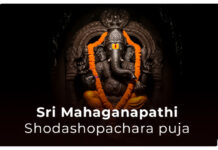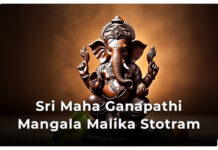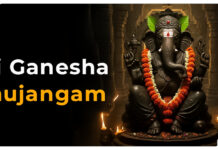
Kumbh Mela: A Celebration of Faith, Mythology, and Togetherness
The Kumbh Mela is more than just a religious gathering it’s a profound journey of faith and devotion that connects millions of hearts. Steeped in ancient mythology and spirituality, this festival serves as a bridge between the past and the present, inspiring hope and unity.
The Mythical Origin: Samudra Manthan
The roots of Kumbh Mela lie in the captivating tale of Samudra Manthan, a story from India’s rich mythology. The gods (Devas) and demons (Asuras) came together to churn the ocean in search of Amrit, the nectar of immortality.
This cosmic effort saw:
The Mandrachala Mountain used as the churning rod.
Vasuki, the serpent king, serving as the churning rope.
Lord Vishnu, incarnated as a tortoise, stabilizing the mountain from sinking.
This timeless story reflects the struggles we all face in life. With perseverance, teamwork, and determination, the ultimate reward liberation can be achieved.
Lord Shiva’s Sacrifice: A Lesson in Selflessness
During the churning, a deadly poison called Halahala surfaced, threatening all existence. Lord Shiva, in an act of ultimate compassion, drank the poison to protect the world. His throat turned blue, earning him the name Neelkantha, or the blue-throated one.
Shiva’s sacrifice teaches us the power of compassion and the strength to endure pain for the greater good a lesson that remains timeless and universal.
The Nectar’s Journey and the Sacred Sites
When the Amrit Kalasha (pot of nectar) finally emerged, it was guarded fiercely by Jayanta, the son of Lord Indra, who carried it for 12 divine days equivalent to 12 human years. Along the way, drops of nectar fell at four locations:
Haridwar
Prayag (Allahabad)
Nashik-Trimbakeshwar
Ujjain
These places became eternally sacred, and to this day, they host the grand celebration of the Kumbh Mela.
Astrology and the Timeless Cycle
The timing of the Kumbh Mela is dictated by celestial alignments. The positions of Jupiter, the Sun, and the Moon determine the festival’s location and schedule, making it a harmonious blend of faith and cosmic science.
The Ritual of Bathing: A Step Toward Liberation
For devotees, bathing in the sacred rivers during the Kumbh Mela is a deeply spiritual act. It is believed to cleanse the soul, wash away sins, and liberate one from the cycle of birth and death. The sight of millions immersing themselves in the holy waters is a moving testament to humanity’s eternal quest for purity and redemption.
Good days to take bath during Kumbh mela
| Festivals | Dates |
| Paush Purnima | January 13, 2025 |
| Makar Sankranti | January 14, 2025 |
| Mauni Amavasya | January 29, 2025 |
| Basant Panchami | February 3, 2025 |
| Maghi Purnima | February 12, 2025 |
| Maha Shivratri | February 26, 2025 |
Different Kinds of Kumbh Mela
Maha Kumbh Mela: The grandest celebration, held once every 144 years at Prayag.
Purna Kumbh Mela: Held every 12 years at all four sacred sites.
Ardh Kumbh Mela: Celebrated every 6 years at Prayag and Haridwar.
Magh Mela: A smaller, annual gathering in Prayag during January-February.
The next Ardh Kumbh Mela is set to take place at Prayag (Allahabad) from January 13 to February 26, 2025. Devotees from across the world will gather at the Triveni Sangam, the confluence of the Ganga, Yamuna, and the mystical Saraswati rivers, to seek blessings and spiritual renewal.
Related posts
Do you know the prominence of first day of Ujjain Kumbh Mela?
What is the astrological significance of Poorna Kumbha Mela?
Ujjain Poorna Kumbh Mela – The holy gathering of divine beings










